Annals of Marine Science
Possible causes for the decline in Adélie Penguin population numbers at anvers island, Western antarctic Peninsula
Christopher Gallacher*
Cite this as
Gallacher C (2019) Possible causes for the decline in Adélie Penguin population numbers at anvers island, Western antarctic Peninsula. Ann Mar Sci 3(1): 006-010. DOI: 10.17352/ams.000013Introduction
Climate change in the vicinity of anvers island
The impacts of climate change are evident even at the most remote places on the planet. This is especially apparent on the isolated Western Antarctic Peninsula (WAP). Anvers island, located on the WAP, has historically had low humidity and extremely low temperatures. Also, regular seasonality maintains equilibrium within the entire system, from which organisms evolved to match these climate patterns. However, recent studies on climate trends in the WAP show disturbances in the regularity of the seasons. Vaughan et al., [1], observed a warming rate during the winter months from 1991 to 2008 that was more intense than along any other studied location globally. Rising temperatures limit sea ice duration as melting occurs earlier. This warming event is altering habitat conditions, thus disrupting entire trophic systems from primary producers to top predators like Adélie penguins [2].
Pygoscelis Adelie: Reliance on sea ice & krill
Adélie penguins (Pygoscelis adeliae) are endemic to Antarctica and occupy the highest trophic level niche in the WAP. Living on the WAP, sea ice conditions are extremely important for the survival of Adélie penguins. Using time lapse imagery to survey population sizes of Adélie colonies and to evaluate sea ice conditions at the Yalour Islands (WAP), Black et al., [3], showed that in winter, when pack ice was not present, Adélie penguins remained on land. Pack ice is vital in allowing Adélie penguins to forage in relatively shallow waters. This promotes their highly evolved natural hunting behavior giving Adélie penguins the best opportunity to feed. Ainley et al., [4], suggest that Adélies are not as effective at hunting in open water due to diving and temperature restrictions. Sea ice not only provides the foundation structure that Adélie penguins utilize their entire lives but is also essential habitat for their primary prey source; krill [5]. As the main dietary component for Adélie penguins, krill abundance and composition are vital for the survivorship of Adélie penguins. Current research over the last 25 years shows a downward trend in the Adélie penguin breeding populations on the WAP [6]. This could be linked to not only krill abundance and lipid composition but also sea ice conditions or even other environmental factors that have yet to be determined.
Changes to sea ice conditions and krill abundance
Overall, sea ice conditions vary each year in length of duration and extent. However, according to Ducklow et al., [7], there is a strong negative trend in annual sea ice extent in the Palmer LTER region. This is due to variable climate and ocean conditions, which dictate the kind of sea ice that forms. There are two main types of sea ice found in the Antarctic region, fast and pack ice. Pack ice floats on the surface of the water and is free to drift with the winds. Under turbulent ocean conditions, rapid heat extraction from the winds causes supercooled water to mix, forming frazzle or irregular ice crystals. These frazzles rise to the surface and potentially collect floating phytoplankton. In contrast, during calm conditions where the rate of heat leaving the surface of the water is greater than the rate of the heat flux into the ocean, fast ice forms. Fast ice is attached to the coastline and doesn’t move with the current or winds. The rate at which fast ice forms is important in creating more habitat such as brine pockets, for organisms like Antarctic krill.
Antarctic krill (Euphausia superba) are one of the most abundant and crucial zooplankton species living in the Antarctic region. The health of krill populations is determined by multiple environmental factors. Also, the timing of Antarctic krill’s life cycle requires specific environmental phenomena like spring phytoplankton blooms and ice algae [7]. Previous research aimed to examine these factors; however, it is still unknown which one is the most critical for maintaining sustainable populations [6]. Understanding the quantity and quality of krill is vital in predicting possible impacts higher up the food web system, like the Adélie penguins.
The purpose of this paper is to examine the driving forces impacting the Adélie penguin populations, specifically at Anvers Island on the WAP. Since previous studies were unable to determine a single significant driving factor, we focused on Antarctic krill abundance and seasonal ice extent changes, mainly due to their apparent close relationship. We believe that understanding these relationships will help to explain why the Adélie penguin populations are decreasing over time.
Methods
Our study would not be possible without the hard work by the Palmer long-term ecological research project (LTER). The Palmer LTER was established in 1990, created by the United States National Science Foundation (NSF). Some of the research conducted during annual cruises focuses on primary and secondary production like phytoplankton and krill abundances. In addition, the Palmer LTER conducts population studies of penguin colonies during the summer at Palmer Station.
The Palmer LTER study area is located along the Western Antarctic Peninsula (WAP). Our study focused primarily on the northern part of the WAP. Since we were looking at long-term changes and impacts, we used yearly data covering a period from 1993 to 2014. The data we incorporated were conducted near Palmer Station on Anvers Island. Specifically, we used Adélie penguin colony data from Christine Island, Torgersen Island, and Humble Island. In order to account for the expected foraging distance of Adélie penguins, we used krill abundance data from stations 600.041 and 600.060. Thus, the overall area of our study includes Anvers Island and the waters just offshore.
We wanted to understand the driving factors between changes in sea ice, Adélie penguin populations, and krill abundances. For long-term changes in sea ice, we looked at annual sea ice duration. Researchers measured sea ice duration with a microwave satellite [3]. We focused on sea ice duration near Anvers Island ranging from years 1993-2014. In order to study changes in Adélie penguin populations, we used the annual Adélie penguin census data the different breeding colonies near Anvers Island. We summed all of the breeding pairs from each of the colonies to obtain the total number of breeding pairs on each island during that year. The islands of the census data we used were Christine Island, Torgersen Island, and Humble Island. Researchers conducted the surveys close to peak egg-laying time and counted only incubating penguins. Penguins were banded, and two researchers searched every colony on the islands every two days during the entire length of the field season. The amount of data for each island varies, as there are some islands with missing years. Lastly, looking at changes in krill populations over time, we used annual krill abundance data from stations 600.040 and 600.060. To obtain krill abundance, net tows were conducted at these grid stations. These net tows not only gave krill abundance, but also location, time, depth, and volume of water filtered by the net.
Our question of interest looks at changes in sea ice duration, Adélie penguin breeding population and krill abundances over time, and at the strength of relationships between sea ice duration and Adélie penguin breeding population, and between krill abundances and Adélie penguin breeding population. We used regression analysis to examine changes in sea ice duration, Adélie penguin breeding population and krill abundances over time. To compare the relationships between the variables, we first need to determine whether our data were parametric or non-parametric. We tested for normal distribution by plotting a histogram to determine if the data had a normal bell curve. Initial histograms using raw data illustrated that the Adélie Penguin breeding pair, Anvers sea ice duration, and krill abundance data were not normally distributed. Based on the preliminary statistical analysis, our data is non-parametric, we will proceed with the Spearman’s Rank Correlation (Table 1).
Results
The basis of this study stems from the apparent trend in Adélie penguin populations along the WAP. Our study supports this claim as Adélie penguins had a negative trend, decreasing from 5085 to 329 breeding pairs in 20 years (Figure 1). Sea ice conditions were highly variable during these 20 years (Figure 2). Additionally, we witnessed peaks in krill abundances ranging every 4 to 5 years from 1993- 2013 (Figure 3). When comparing the total Adélie penguin breeding pairs and sea ice duration, we found no correlation (Table 1). This was true for almost all of the comparisons we conducted (Tables 1,2). Although insignificant, it appears that longer sea ice durations coincide with higher Adélie breeding pairs (Figures 4,5). We also observed a positive trend between annual sea ice duration and krill abundances however this was not statistically significant (Figure 6).
Discussion
Adélie penguin population decline
We found that the WAP Adélie penguin populations have declined from 5085 to 329 breeding pairs in the last 20 years. Recent studies examining Adélie penguin chick and breeding pair counts are in agreement showing a negative trend in the overall population of penguins [6]. estimates that one-third of current Adélie penguin colonies in Antarctica will start declining by 2060, with an increase to 60 percent by 2099. These projections were made by comparing past and future changes to habitat suitability during the critical breeding and nesting period. In contrast, Sailley et al., [8], created a model with a food-web structure built with current observations that suggest there will be enough krill to sustain current or slightly diminished penguin populations. Regardless of type of modeling, it is apparent that the Adélie penguin population in the WAP is in danger. Forcada et al., [9], who reported a decline in Adélie penguin populations, suggested climate change as the leading cause. The impacts of climate change are highly variable, and they can affect all organisms in the ecosystem.
Possible causes for adélie decline
In the WAP, climate change is the leading cause of Adélie penguin’s population decline. Understanding the environmental disturbances that are contributing to the decline in Adélie penguin is crucial for the survival of the species. In order to evaluate the driving forces causing the Adélie penguin populations to decline, we examined the critical components to their survival and ability to reproduce: sea ice & krill. Surprisingly, we observed no significant correlation between Adélie penguin breeding population and sea ice duration. Although not a statistically significant relationship, during years where sea ice duration was long, we found high numbers of breeding pairs (Figure 4). This supports previous research on Adélie penguin’s reliance on sea ice [10]. The observed lack of statistical relationship between sea ice and Adélie penguins could also be a result of other driving factors that influence the decline in Adélie populations. Sea ice provides habitat for the Adélie penguins to rest and rear young along with providing habitat and optimal conditions for their primary food source, krill.
The close predator-prey relationship between Adélie penguins and krill is important when considering the potential causes for Adélie population decline. We did not find a significant relationship between Adélie penguin breeding pairs and krill abundance. This could be a result of highly variable krill abundance data and due to declining Adélie penguin populations over time, there are less breeding pairs even during years with high krill abundance (Figure 5). Although not statistically significant relationship in our study, it is widely known that Adélie penguins and Antarctic krill are closely related [7].
Changes in sea ice duration & krill abundance over time
The type of sea ice that forms is dependent on the seasonal weather patterns and ocean conditions, thus sea ice conditions are currently trending down in the WAP [7]. We observed a downward trend in sea ice duration over the 20 years of this study (Figure 2). However, sea ice duration was highly variable from year to year and throughout the winter months. Stammerjohn et al., [11], found that sea ice extent can transition between open water, pack ice, and fast ice conditions during the winter months. This is most likely attributed to the rise in air and ocean temperatures at the WAP.
Along with changes in sea ice duration at Anvers island, krill abundance is also changing in the region. We observed a possible oscillating pattern of abundances with peaks every 4 to 5 years (Figure 3). This result was not statistically significant, however, Chapman et al., [5], also showed this cyclical pattern in krill abundances. Every 4 to 5 years there was a positive spike in the amount of large krill, followed by a year filled with smaller krill. This could be explaining the life cycle of krill with larger females reproducing small juveniles the following year. Similarly, Steinberg et al., [12], were unable to definitively determine a trend in krill abundances, but witnessed a five-year cycle of spikes in krill abundance along the WAP. It is important to understand the relationship between sea ice and krill abundance as both play a role in maintaining healthy, reproducing Adélie penguin populations.
Relationship between sea ice duration and krill abundance
Much like the Adélie penguins, krill also depend on sea ice conditions to survive the harsh winter months of the Antarctic. When comparing krill abundance and sea ice duration, we observed longer sea ice duration with higher krill abundances. This is because sea ice provides shelter from predation, and ice algae growing in sea ice provides a rich food source [5]. Ice algae can only form if sea ice formation is not late in the fall, when sea ice retreat and advance coincide with the phytoplankton spring bloom. The krill life cycle relies on the regular seasonality of the sea ice retreat and spring bloom. A longer sea ice duration has a higher chance of forming ice algae, which female krill need to reproduce [13]. Also, a longer sea ice duration allows juvenile krill to feed for longer, accumulating more stored lipids, before the beginning of winter conditions [5]. Sea ice conditions have been positively correlated to the lipid composition of krill, even allowing researchers to evaluate the quality of the krill populations [13]. We did not find a statistically significant relationship between sea ice duration and krill abundance. However, our p-value was 0.08, which suggests a weak positive relationship, and would possible strengthen if our sample size was greater. Another reason for the observed lack of a significant relationship could be a decrease in primary production over the WAP. Montes-Hugo et al., [14,15], looked at primary production over the last 30 years and found a 12 percent decline along the WAP. This decrease in primary production would reduce the amount of available phytoplankton, thus limiting the essential food source for krill causing their abundances to fall. Steinberg et al., [12], also noted krill’s dependence on primary producers, where primary production levels can influence krill abundance for the following two years. Ultimately, our insignificant finding could be attributed to other potential drivers in addition to sea ice and krill [16-18].
Conclusion
The complexity of the WAP food webs and ecosystems makes it difficult to pinpoint one particular factor that drives the others. In our study, we were only able to analyze the relationships between sea ice, krill abundance, and Adélie penguin populations. These are most likely not the only factors that influence Adélie penguin population success. Evidence from other studies supports the importance of primary production along with the optimal timing of blooms and sea ice retreat [5]. The organisms that make up this complex system are extremely effective at capitalizing on the undisturbed seasonal changes. Climate change disrupts the seasonality of the Antarctic, which can disrupt organisms from bottom to top trophic levels. Future studies should incorporate a wide range of possible factors to get a holistic observation of the possible driving factors in the decline of Adélie penguin populations. Ultimately, each factor plays an important role in maintaining a healthy balanced system that is sustainable for future generations.
- David V, Marshall, Gareth, Connolley M, William, et al. (2003) Recent Rapid Regional Climate Warming on the Antarctic Peninsula. Climatic Change 60: 243-274. Link: https://tinyurl.com/yyg5w4mp
- Saba G, Fraser W, Saba V, Iannuzzi R, Coleman K, et al. (2014) Winter and Spring Controls on the Summer Food Web of the Coastal West Antarctic Peninsula. Nature Communications 5. Link: https://tinyurl.com/y53tksjy
- Black C, Southwell C, Emmerson L, Lunn D, Har T (2018) Time-lapse imagery of Adélie penguins reveals differential winter strategies and breeding site occupation. Link: https://tinyurl.com/y6m3eu4q
- Ainley D, deLeiris L, DeLeiris L (2002) The Adélie penguin: bellwether of climate change: Columbia University Press, NY, USA.
- Chapman EW, Hofmann EE, Patterson DL, Fraser WR (2010) The effects of variability in Antarctic krill (Euphausia superba) spawning behavior and sex/maturity stage distribution on Adélie penguin (Pygoscelis adeliae) chick growth: A modeling study. Deep Sea Research Part II. Topical Studies in Oceanography 57: 543-558. Link: https://tinyurl.com/yxl2bjh3
- Cimino M, Lynch H, Saba V, Oliver M (2016) Projected Asymmetric Response of Adélie Penguins to Antarctic Climate Change. Scientific Reports 6. Link: https://tinyurl.com/y295vu2q
- Ducklow H, Andrew Clarke A, Rebecca Dickhut R, Doney S, Geisz H, et al. (2012) The Marine System of the Western Antarctic Peninsula. Antarctic Ecosystems: An Extreme Environment in a Changing World, First edition. Link: https://tinyurl.com/y3h5wqou
- Sailley S, Ducklow H, Moeller H, Fraser W, Schofield O, et al. (2013) Carbon Fluxes and Pelagic Ecosystem Dynamics near Two Western Antarctic Peninsula Adélie Penguin Colonies: An Inverse Model Approach. Marine Ecology Progress Series 492: 253–272. Link: https://tinyurl.com/y3nmdh2p
- Forcada J, Trathan P (2009) Penguin responses to climate change in the Southern Ocean. Global Change Biology 15: 1618-1630. Link: https://tinyurl.com/y4tshjlj
- Ainley D, Ribic C, Spear L (1993) Species-habitat relationships among Antarctic seabirds: a function of physical or biological factors? The Condor Ornithological Application 95: 806-816. Link: https://tinyurl.com/yxgchm9t
- Stammerjohn S, Martinson D, Smith R, Iannuzzia R (2008) Trends in Antarctic Annual Sea Ice Retreat and Advance and Their Relation to El Niño–Southern Oscillation and Southern Annular Mode Variability. Journal of Geophysical Research 113. Link: https://tinyurl.com/y6p76vr3
- Steinberg DK, Ruck KE, Gleiber MR, Garzio LM, Cope JS, et al. (2015) Long-term (1993–2013) changes in macrozooplankton off the Western Antarctic Peninsula. Deep Sea Research Part I. Oceanographic Research Papers 101: 54-70. Link: https://tinyurl.com/y5fh8zxa
- Clark A (1980) The biochemical composition of krill, Euphausia superba Dana, from South Georgia. Journal of Experimental Marine Biology and Ecology 43: 221-236. Link: https://tinyurl.com/y4ksmxq5
- Montes-Hugo M, Doney SC, Ducklow HW, Fraser W, Martinson D, et al. (2009) Recent Changes in Phytoplankton Communities Associated with Rapid Regional Climate Change Along the Western Antarctic Peninsula. Science 5920: 1470-1473. Link: https://tinyurl.com/y4mxtwb7
- Stammerjohn SE, Smith RC (1996) Spatial and Temporal Variability of Western Antarctic Peninsula Sea Ice Coverage.” Foundations for Ecological Research West of the Antarctic Peninsula Antarctic Research Series 81-104. Link: https://tinyurl.com/yybgmz5w
- Fraser W (2017) Adélie penguin area-wide breeding population census, 1991-present. Environmental DataInitiative.
- Stammerjohn S (2017) Sea ice duration or the time elapse between day of advance and day of retreat within a given sea ice year for the PAL LTER region West of the Antarctic Peninsula derived from passive microwave satellite, 1978-2017. Environmental DataInitiative.
- Steinberg D (2017) Zooplankton collected with a 2-m, 700-um net towed from surface to 120 m, aboard Palmer Station Antarctica LTER annual cruises off the western Antarctic peninsula, 2009-2016. Environmental DataInitiative.
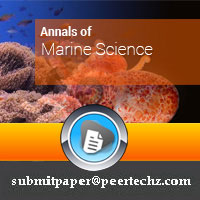
Article Alerts
Subscribe to our articles alerts and stay tuned.
 This work is licensed under a Creative Commons Attribution 4.0 International License.
This work is licensed under a Creative Commons Attribution 4.0 International License.

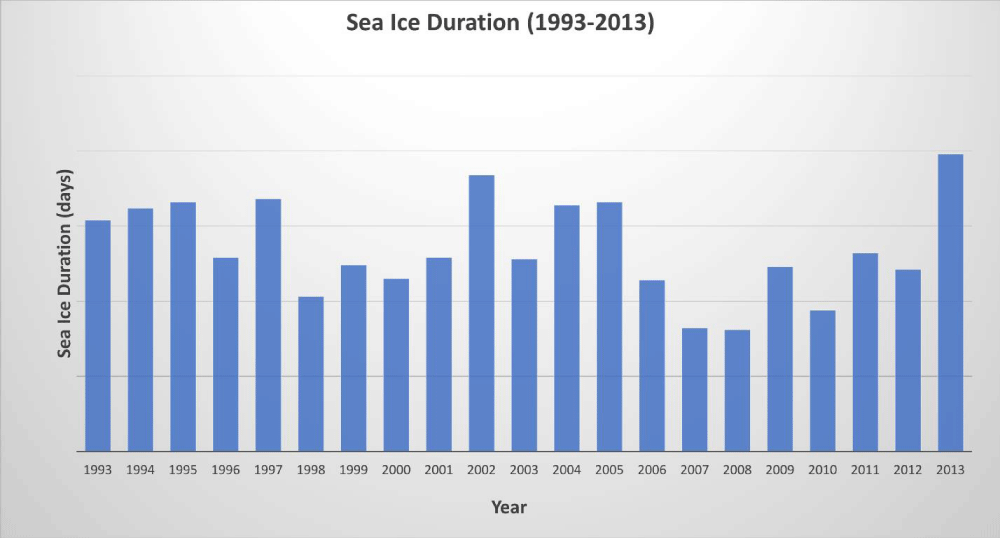
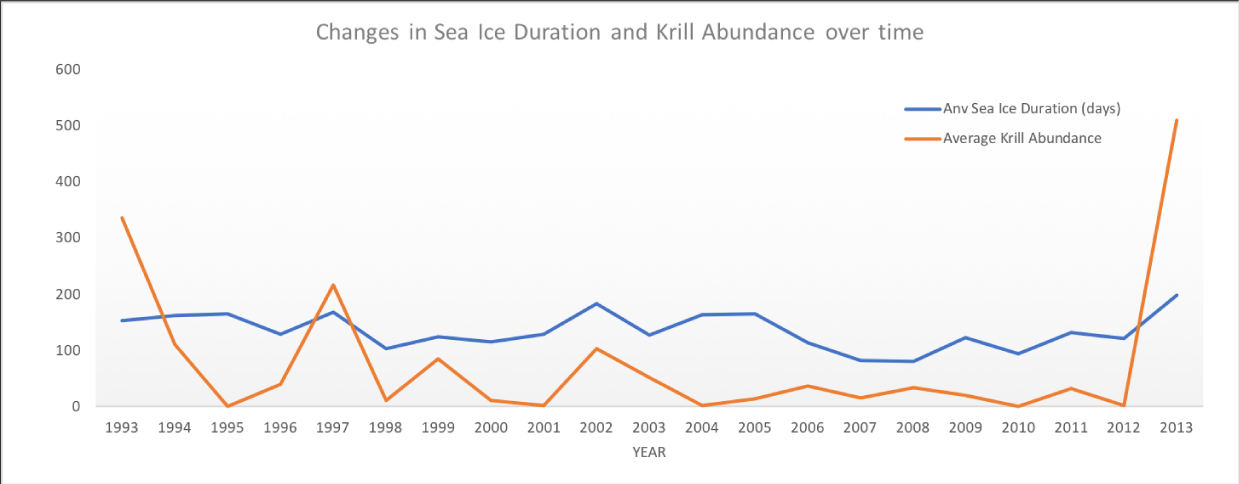

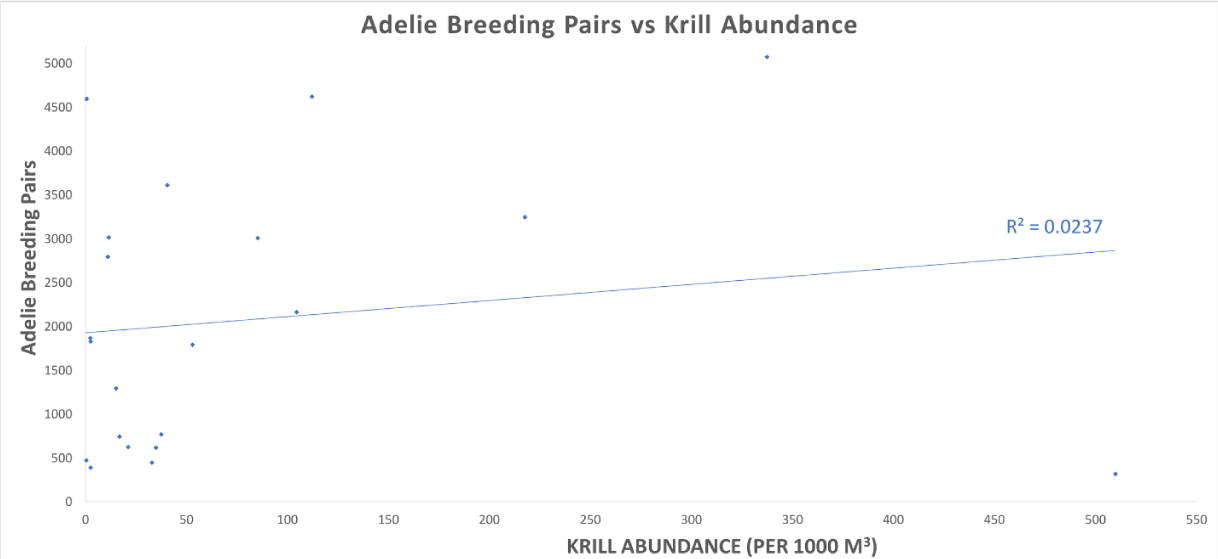
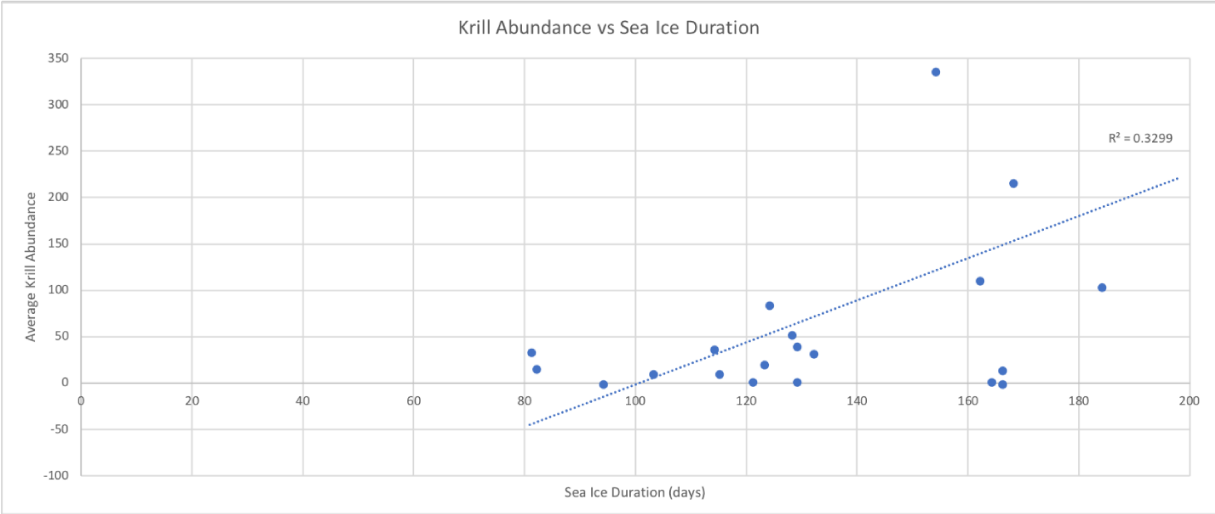
 Save to Mendeley
Save to Mendeley
